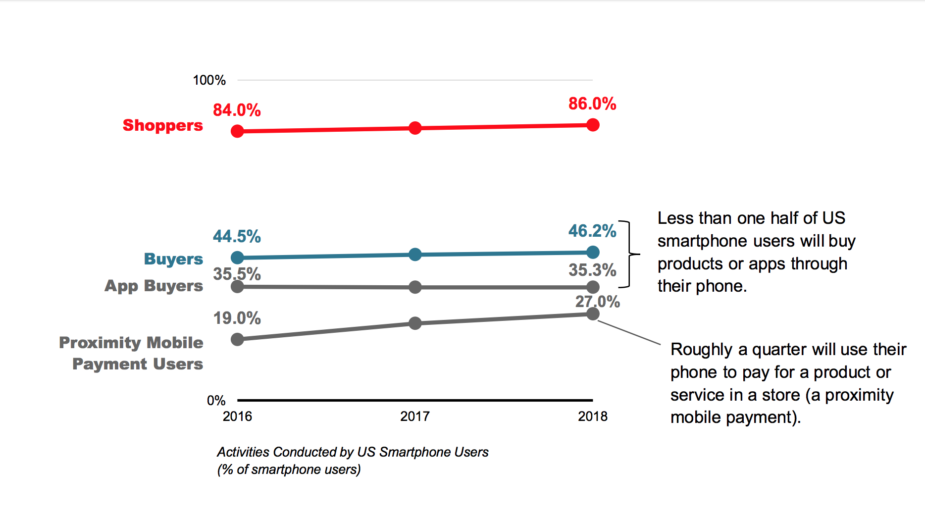Instagram Shopping Ads: A Simpler Path to Purchase

When was the last time you picked up your phone? Is it in your hand now? As technology grows increasingly more capable, I frequently find myself relying on the luxury of near-instant data retrieval and connectivity. Of course, this is nothing new. According to a recent survey from eMarketer, 84% of smartphone users employ browsers or mobile apps to discover, research, and compare products, though only 1 in 3 will make a purchase through an app. Instagram’s recent decision to test a new Shopping ad format aims to remove barriers for in-app purchases.

In October 2013, Instagram shared their intent to begin showing ads within the pictorial feed. Though not nearly the first platform to monetize this way, the announcement stated that “[s]eeing photos and videos from brands you don’t follow will be new, so we’ll start slow.” Since that time, users have been gradually conditioned to accept more and more of these foreign offerings amongst their favorite social media sites. However, true to their artistic origin, Instagram is still aiming to improve sponsored posts for retail advertisers by providing easy-to-access information about the products featured.
[bctt tweet=”#Instagram makes in-app purchases easier with new #Shopping #ad format.” username=”akaEmmaLouise”]
The new ad format, set to begin testing next week, will initially be available to 20 select brands and will show only to US-based iOS users. It allows advertisers to tag a maximum of 5 items within each post along with a defined price. When selected, these tags present additional information about the product with a “Shop Now” button, linking to the advertiser’s website via an in-app browser.
Though still in early stages of development, this interactive advertising format presents not only a way for retailers to inform potential consumers about their products, but also encourages a reconsideration of advertising strategy for Instagram. While captivating visual stimuli may have been sufficient in the past—and present—it seems that the future of Instagram success may require an even more complex creative plan. As demonstrated in their example videos, the brands selected for testing (including Kate Spade, JackThreads, and Warby Parker) effectively leverage Instagram not just to show a product, but to tell a story. They connect with users conversationally, with retail information included.
No timeline has been announced for public availability of this new format. As testing progresses, however, Instagram also intends to include product recommendations, new product showcasing, global expansion, and a “save for later” option in future iterations. In the meantime, we are eager to hear your reactions to and thoughts about this new format. Share your insights on Twitter!



